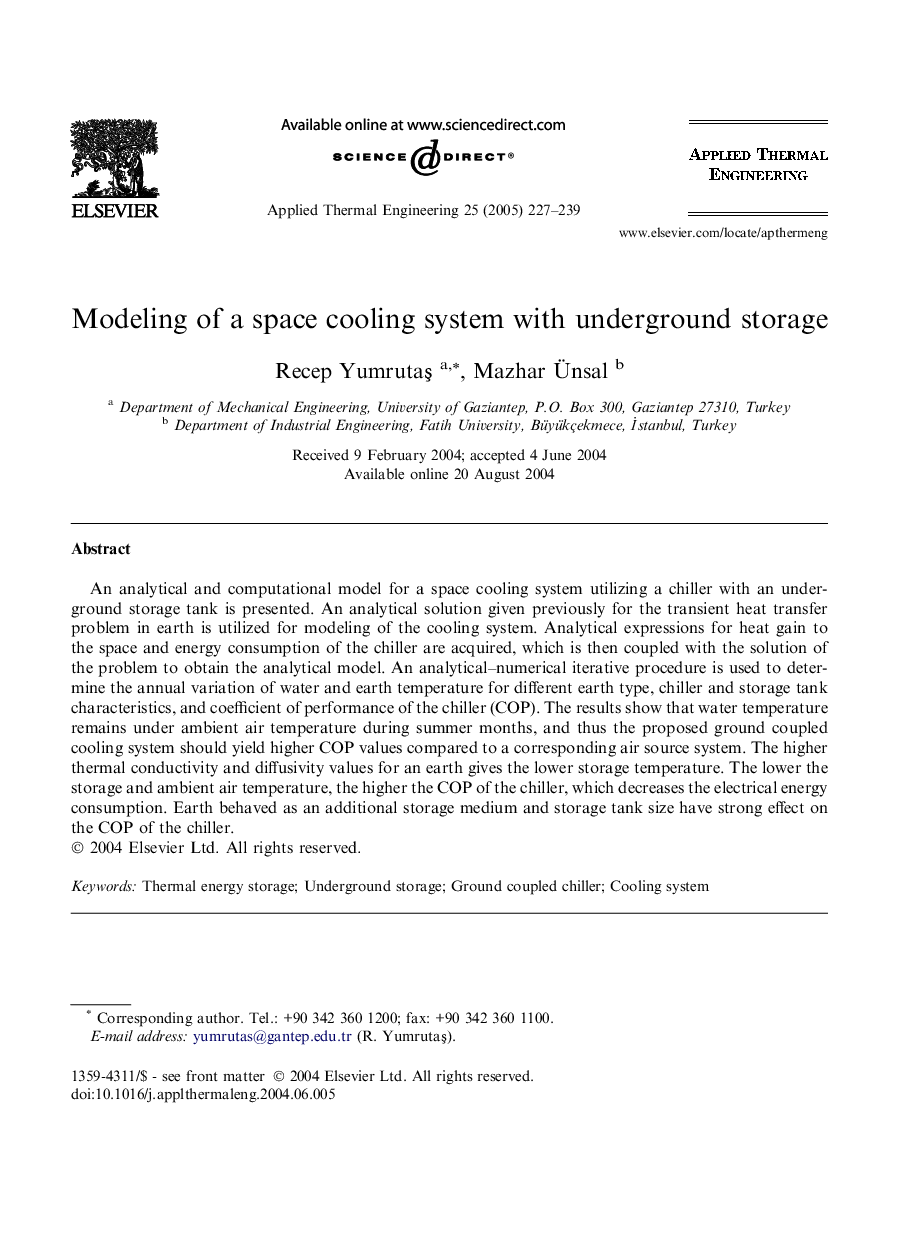| Article ID | Journal | Published Year | Pages | File Type |
|---|---|---|---|---|
| 9690361 | Applied Thermal Engineering | 2005 | 13 Pages |
Abstract
An analytical and computational model for a space cooling system utilizing a chiller with an underground storage tank is presented. An analytical solution given previously for the transient heat transfer problem in earth is utilized for modeling of the cooling system. Analytical expressions for heat gain to the space and energy consumption of the chiller are acquired, which is then coupled with the solution of the problem to obtain the analytical model. An analytical-numerical iterative procedure is used to determine the annual variation of water and earth temperature for different earth type, chiller and storage tank characteristics, and coefficient of performance of the chiller (COP). The results show that water temperature remains under ambient air temperature during summer months, and thus the proposed ground coupled cooling system should yield higher COP values compared to a corresponding air source system. The higher thermal conductivity and diffusivity values for an earth gives the lower storage temperature. The lower the storage and ambient air temperature, the higher the COP of the chiller, which decreases the electrical energy consumption. Earth behaved as an additional storage medium and storage tank size have strong effect on the COP of the chiller.
Related Topics
Physical Sciences and Engineering
Chemical Engineering
Fluid Flow and Transfer Processes
Authors
Recep YumrutaÅ, Mazhar Ãnsal,
